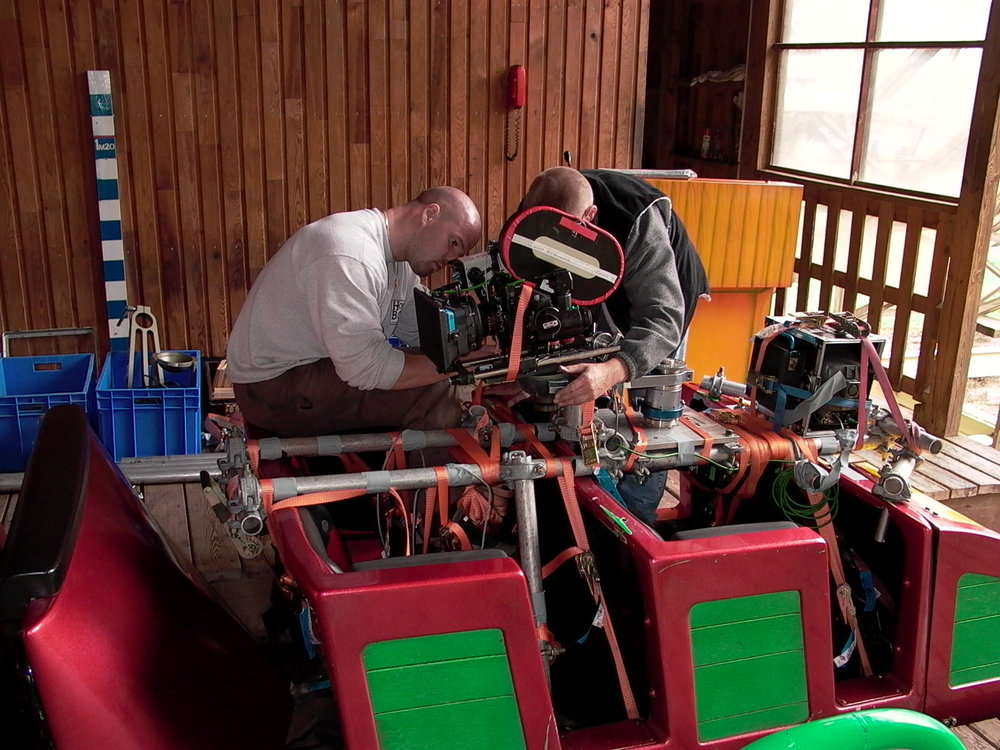
Stephen Williams
Premium Member-
Posts
4,652 -
Joined
-
Last visited
Everything posted by Stephen Williams
-
Film Vs. Digital from a cost perscpective.
Stephen Williams replied to Michael Watson's topic in General Discussion
It's one of those things where you can make the no's go any way you want. I know 35mm features shot with a photochemical finish where the crew got paid for $100,000. What's your budget, what sort of Digital do you want to use? Alexa, F35, Epic or EX3? -
The first one fitted better to the lighting & look. The shallow DOF was hardly shallow in any case....a compromise that failed. Does it matter either way? No not at all!
-
aAssuning you used 30 fps to smooth out the motion, then play back at 24/25 then nothing has changed so yes.
-
Using your light meter..
Stephen Williams replied to Josef Heks's topic in Lighting for Film & Video
Fairly quickly you will just be able to use your eyes for that! -
The pics are here:- http://www.wirelessgoodness.com/2011/05/03/reds-60k-epic-m-camera-gets-torn-down-by-the-fcc/ http://tinyurl.com/3qa5tzv
-
Using your light meter..
Stephen Williams replied to Josef Heks's topic in Lighting for Film & Video
Tahing a basic light reading is very easy, don't try to get complicated! An incident reading will be fine, it's an average reading so will be correct! A spot reading is 'Advanced' use, most beginners will screw up their exposure because of using one. Google 'zone system' if you want to use a spot meter. I usually know what I expect the meter to say so will tilt it until is says what I expect! -
Shooting car in green screen
Stephen Williams replied to Bruno Zotto's topic in In Production / Behind the Scenes
Why is my first question, what are you trying to achieve? -
Macro of water blister?
Stephen Williams replied to Olivier Martinez's topic in Lenses & Lens Accessories
Whilst the Optex is very good, all the lenses are wide so close ups are a no no. (OK it is possible to get an image at exaxtly 1:1 without a lens) -
I assumed you were a guest of theirs along with Keith!
-
Where to ask for help?
Stephen Williams replied to Pawel Saladziak's topic in Business Practices & Producing
Thats a good reason to use a shipping company. I get the feeling there is more to this, like not wanting to pay import duties on arrival. -
"Ambush" tests comes to mind!
-
I generally piss off rental houses by insisting every lens goes on a colimator & the depth is measured. I also like to use an autocollimator. There was somenody making a pocket autocollimator which he sold on Ebay for $175, unfortunately he has retired! In some countries in Europe it's an insurance requirement that a film test is done & every lens is tested. The results looked at on a microscope. However most of the productions I work on don't have the budget to test or for insurance!
-
Taping out does not chect the FDD which is whats important, your just checking ground glass & lens collimation combined. Using an autocollimator is very quick set the lens to infinity, look through the eyepiece & then look through the autocollimator, 30 seconds & you know the lens, ground glass & FFD are all correct.
-
Still Lenses vs. Cine Lenses
Stephen Williams replied to Benjamin G's topic in Lenses & Lens Accessories
Mechanics, Quality control, more user friendly & hand made. Lenses produce an image circle, so it's BS about cine lenses being more widescreen. -
With a traditional film camera you measure the FFD. You are checking the lenses to the ground glass not the focus on the film. Using an autocollimator you can check the GG & Film with the camera running.
-
50% Upfront is fairly standard. If the client goes bust without paying, do you really want to cover the loss yourself? It happens quite often, personally I am bored with bank rolling people who are richer than I am. It's a business, making money is important, cash flow kills more business than anything else.
-
Ask for 50% up front, if that will cover your lab costs, if not try to invoice month by month with a smaller deposit.
-
Normally on a large job one would ask for stage payments. How long will this take from start to finish? Stephen
-
Camera rigging to roller coasters
Stephen Williams replied to Patrick Kaplin's topic in Grip & Rigging
I had a shoot on a rollercoaster about 6 years ago, here is a picture that gives you an idea of what was involved. Stephen -
Could you tell me what single lens costs $180,000?


